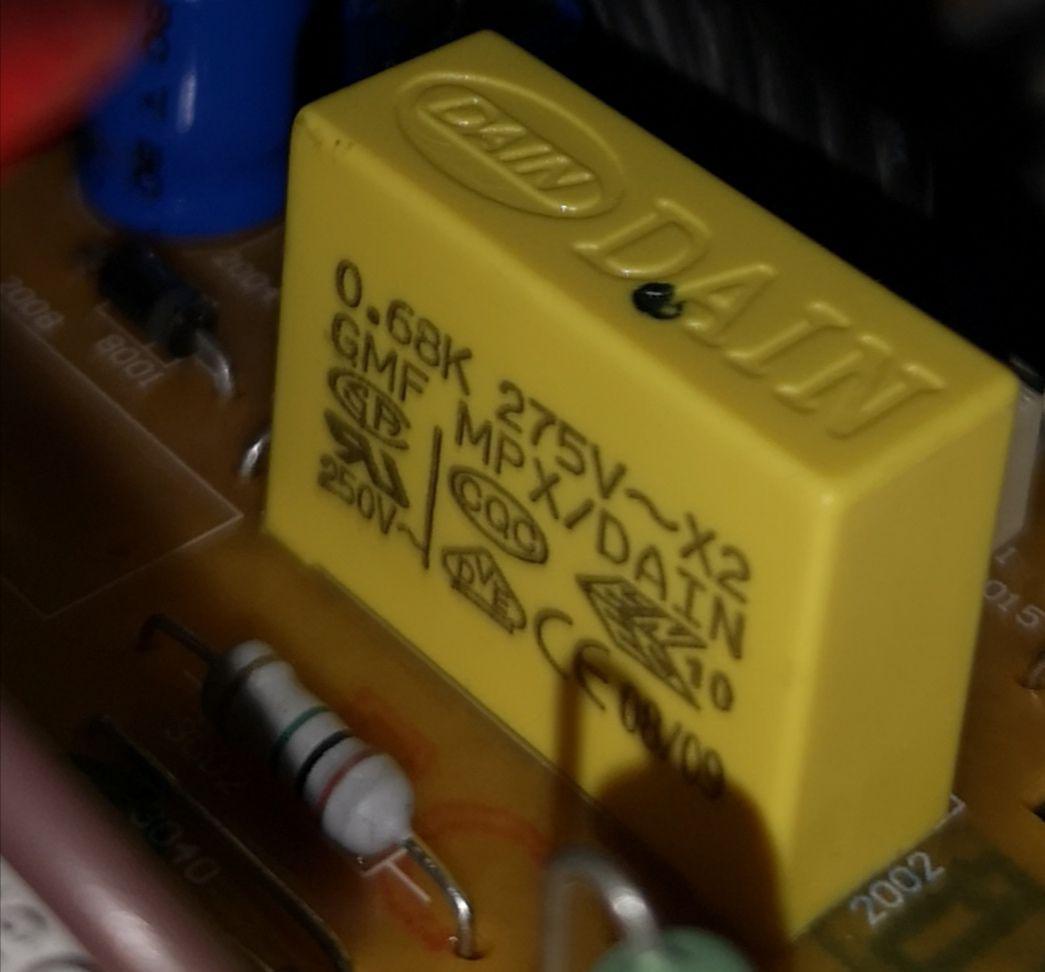one of my electronic appliances has stopped working after several years of use, it is definitely beyond the warranty period however I've been unable to find any more recent appliances that beat it.
With this said, I have looked into repairing the device after repairing a previous one (thanks for those that helped with my previous question). The issue has been reported from various users of the appliance and a few seem to point to the safety capacitor being responsible.
Last time, I was advised to pick one like for like however there doesn't seem to be that much information on the capacitor itself and I am struggling to find the datasheet for the capacitor.
From my understanding the 0.68K means that it is 0.68uF +/- 10%. The voltage is 275V. I measured the outside of it (as it's still attached to the circuit board), it's 26mm(length)*9mm(width)*18mm(depth), height/width can be changed a little as there is space.
The only suitable replacement I have found isn't the right size (the others I have seen are +/-20%). ECQU2A684KLA
Would it be possible to add wires to the end of a capacitor to extend the pins so that it would match the holes for the pins on the circuit board? If so, what effect would this have? Would it reduce/increase the resistance?
Thanks.


